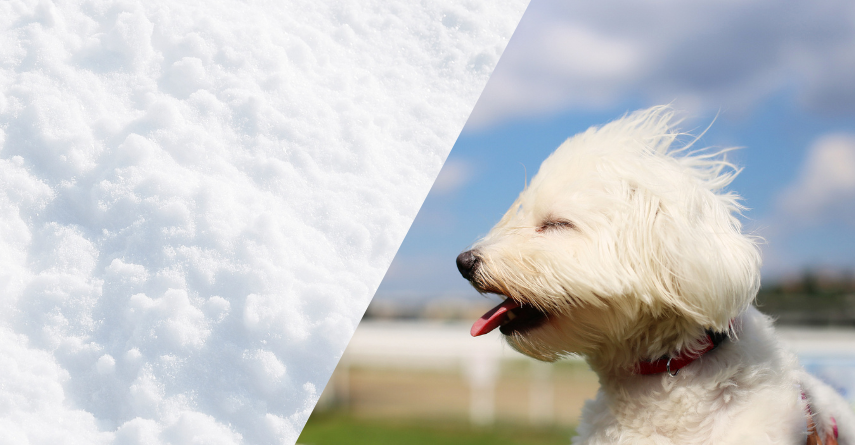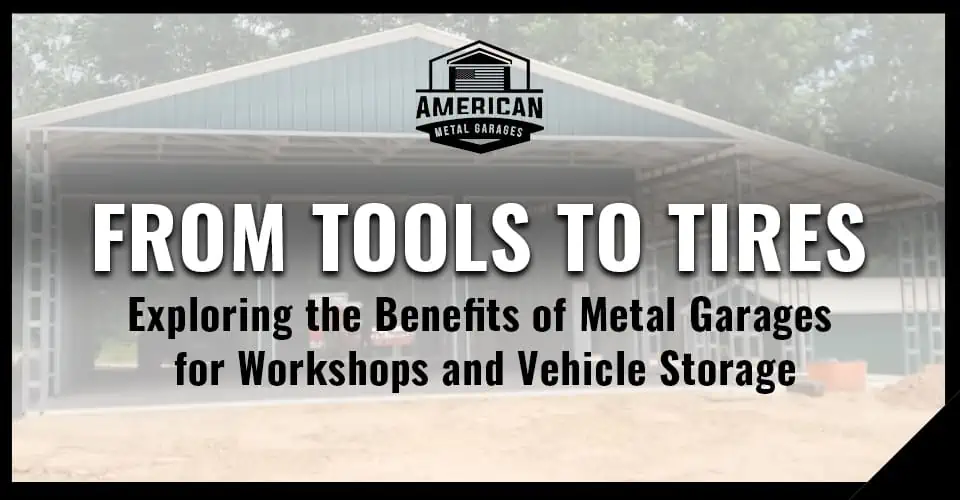If you’re considering adding a carport, metal building, or garage to your property, knowing the snow load and wind speed rating is important because they impact the structural integrity of your building. Understanding snow load vs. wind speed ratings for custom metal buildings ensures that your new structure can withstand the elements and remain stable and safe, preventing collapse and damage.
At American Metal Garages, our team is committed to providing high-quality custom metal garages that will stay strong against whatever Mother Nature has in store. Let’s take a closer look at snow load vs. wind speed ratings for metal buildings, so you can learn more about how these can impact your structure, especially if you have a new building on the horizon.
What Is A Snow Load Rating?
A snow load rating for a metal building refers to how much weight from accumulated snow the structure can stand before it becomes compromised. The snow load rating measures pounds per square foot (psf) and considers factors such as:
- Local climate
- Roof slope
- Snow type
If you live in an area with heavy snowfall, you will need a structure that can support greater weight on the roof.
Snow Load Ratings for Metal Buildings and More
An average snow load rating for metal buildings like carports, garages, and barns can range from 20 to 30 pounds per square foot. As we mentioned above, you need to consider your local climate and your roof’s design. The shape and structure of the roof can impact how much snow accumulates. Steeper roofs tend to get rid of snow more easily, lowering the load.
Snow load ratings break down as such:
- Light snow areas: 10-20 psf
- Moderate snow areas: 20-30 psf
- Heavy snow areas: 30-40 psf
If you want to reduce the impact snow will have on your roof, you can regularly remove snow from roofs to prevent excess weight. Also, look out for potential ice dam formation which can add a lot of weight to the roof.
Different States Have Different Snow Load Ratings
The area where you live greatly impacts your metal building’s snow load rating. An easy way to look at the difference is to break down the snow load ratings by state.
Here’s a look at how the snow load ratings of several area states vary, based on the USDA Forest Service:
North Carolina (NC) – 10 psf-25 psf
South Carolina (SC) – 5 psf-15 psf
Georgia (GA) – 0 psf-10 psf
Kentucky (KY) – 15 psf-20 psf
Virginia (VA) – 10 psf-25 psf
Tennessee (TN) – 10 psf-25 psf
West Virginia (WV) – 20 psf -30 psf
Ohio (OH) – 20 psf-25 psf
Maryland (MD) – 15 psf-30 psf
New York (NY) – Varies greatly, consult local zone
Pennsylvania (PA) – 20 psf -25 psf
Since these are general ranges for entire states, it’s always recommended to consult local building codes to determine the appropriate snow load rating for your specific area.
What Is A Wind Speed Rating?
The wind speed rating refers to the maximum wind velocity a building can withstand without damage. This is usually described in miles per hour (mph). When comparing snow load vs. wind speed rating, it is important to note that the snow load rating measures the vertical weight a roof can handle while the wind speed rating measures the horizontal force the wind exerts on the roof.
Several factors determine a building’s wind speed rating, such as:
- Geographic location
- Surrounding terrain
- Height of your structure
When looking at these factors, structures that are near the coastline tend to get a greater deal of wind compared to structures in heavily wooded areas where trees can lower the wind’s impact on buildings.
Wind Speed Ratings for Metal Buildings and More
The wind speed plays a huge role in how metal structures are designed. From the structural components to the choice of materials, the overall design ensures optimal wind resistance. If you live in an area with a high average wind speed, it is in your best interest to have the strongest materials possible to protect your building’s structural integrity.
A storm, earthquake, or other natural disaster can test a building’s durability. Being aware of a building’s wind speed rating can help property owners and builders make informed decisions about their building’s design and allow them to make adjustments if necessary.
Different States Have Different Wind Speed Ratings
The state you live in will drastically impact your wind speed rating. Knowing the standard wind speeds for your state will allow you to design structures that are safe and follow local building codes.
Here’s a look at the average wind speeds of several states according to World Population Review:
North Carolina (NC) – 18mph
South Carolina (SC) – 16mph
Georgia (GA) – 16mph
Kentucky (KY) – 16mph
Virginia (VA) – 20mph
Tennessee (TN) – 16mph
West Virginia (WV) – 20mph
Ohio (OH) – 16mph
Maryland (MD) – 20mph
New York (NY) – 16mph
Pennsylvania (PA) – 18mph
Specific building wind ratings can be determined by tests that measure the amount of pressure that a structure can withstand. Property owners should know their local building codes, as they are often the most accurate source of wind speed ratings. Most codes will require that a structure is able to withstand winds up to a certain mph and that all materials meet standards for durability.
Looking for a Durable & Custom Metal Building? Contact American Metal Garages Today!
Whether you’re looking for a new metal garage, carport, or other metal building, the team at American Metal Garages can get the job done.
Our team of professionals is here to provide the most durable structures for your needs. Contact Us Today to learn more!






